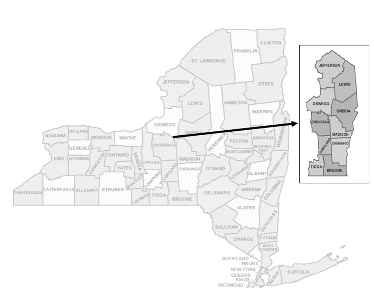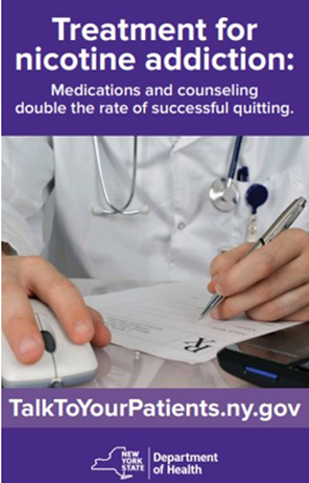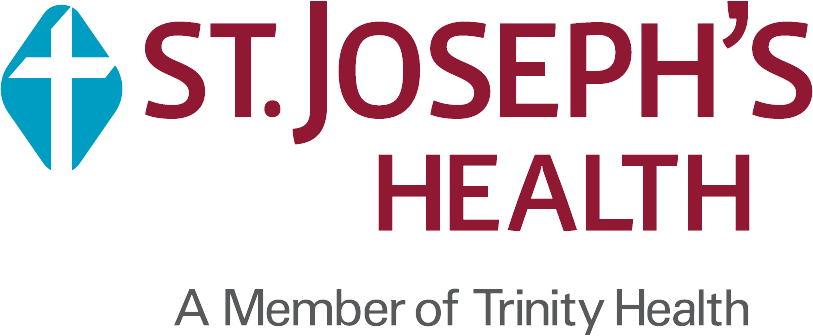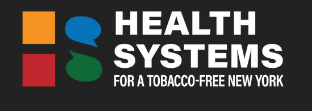Tobacco Cessation
Who We Are:
A network of grantees covering 62 NYS counties working with health care systems to improve the reach and delivery of evidence-based tobacco dependence treatment to all New Yorkers who use tobacco products. 
Our Center covers 10 counties: Broome, Chenango, Cortland, Jefferson, Lewis, Madison, Oneida, Onondaga, Oswego, and Tioga.
What We Do:
Our team works to facilitate change within healthcare organizations, community health centers, Federally Qualified Health Centers, behavioral health care organizations, and similar organizations that serve populations disproportionality affected by tobacco use and dependence.
Contact Us:
Kristen Richardson, RN, CTTS
Program Director
Kristen.Richardson@sjhsyr.org
Danielle O’Brien, CTTS
Program Coordinator
Danielle.L.Obrien@sjhsyr.org
Beth Gero, Ph.D., CTTS, NCCTP
Program Specialist
Cheryl.Gero@sjhsyr.org
315-250-1305
Joel Schuyler, CASAC, NCTTP 
Program Specialist
Joel.Schuyler@sjhsyr.org
315-405-6294
Your doctor can help you quit smoking for good. According to the Centers for Disease Control and Prevention (CDC) your doctor’s advice and assistance more than doubles the odds that you will quit successfully, so make an appointment and ask for help to start your tobacco-free journey.
Your doctor can provide a range of support and treatment for quitting. When you talk to your doctor, he or she can help you decide what support will help you the most including medication and counseling.
“Quitting smoking is the best thing a tobacco user can do to improve his or her health, improve chronic conditions like hypertension and diabetes, and avoid serious complications from respiratory illness including the flu which is so prevalent this time of year.” said Kristen Richardson, RN, CTTS, Director of the Central New York Regional Center for Tobacco Health Systems. “Users can increase their chances of success with help. When smokers team up with their healthcare provider, long-term quit rates more than double.”
According to an American Cancer Society estimate, 30 percent of cancers could be avoided if people stopped using tobacco.[i] Tobacco use is still the leading cause of preventable disease and death in New York State, taking more than 28,000 lives every year[ii] and afflicting nearly 600,000 New Yorkers with serious disease directly attributable to their smoking.[iii]
Smokers are also at greater risk for diseases that affect the heart and blood vessels. Smoking damages blood vessels and can make them thicken and grow narrower, which makes your heart beat faster and your blood pressure go up leading to hypertension.[iv],[v]
Tobacco users with high blood pressure that quit using tobacco will be able to control the disease and are less likely to experience complications such as stroke.
The use of approved stop smoking medications at least doubles a tobacco user’s chances of successfully quitting[vi] and all of these medications, including the patch, gum and lozenges, are covered by New York State Medicaid plans. Additionally, individual and group cessation counseling is a covered benefit for New York State Medicaid enrollees. A doctor can determine next steps and prescribe the medications most likely to help their patient make a successful quit attempt.
“We encourage tobacco users to think beyond a New Year’s resolution because quitting smoking takes a lot of work and resolve,” said Richardson. “Make a plan, get support from your doctor, and keep trying until you succeed.”
For a free personalized quit plan, talk to your doctor and for more support, contact the New York State Smokers’ Quitline at 1-866-NY-QUITS or www.nysmokefree.com. The Quitline can offer a variety of resources and support including phone coaching, automatic quit messages to your mobile, landline or email, and a free starter kit of available nicotine replacement therapy for eligible smokers.
The New York State Smokers’ Quitline has helped more than a million New Yorkers quit smoking.
About St. Joseph’s Health
St. Joseph’s Health is non-profit health care system based in Syracuse, NY. St. Joseph’s has been an innovative leader in health care since our founding in 1869 as the first hospital open to the public in the city of Syracuse. Offering primary, specialty and home care, a Magnet-recognized hospital, and collaboration with community partners, St. Joseph's Health advances the well-being of the communities we serve through an expanding range of services to ensure our patients achieve optimum long-term health. It is ranked by Consumer Reports among the top 15 heart surgery centers in the country, a designated Primary Stroke Center and a U.S. News & World Report “Best Regional Hospital.” St. Joseph’s Health is affiliated with St. Joseph’s Physicians, and is a member of Trinity Health.
About Trinity Health
Trinity Health is one of the largest not-for-profit, Catholic health care systems in the nation. It is a family of 115,000 colleagues and nearly 26,000 physicians and clinicians caring for diverse communities across 25 states. Nationally recognized for care and experience, the Trinity Health system includes 88 hospitals, 131 continuing care locations, the second largest PACE program in the country, 125 urgent care locations and many other health and well-being services. Based in Livonia, Michigan, its annual operating revenue is $20.2 billion with $1.2 billion returned to its communities in the form of charity care and other community benefit programs.
About The New York State Smokers’ Quitline
The New York State Smokers’ Quitline (1-866-NY-QUITS), based at Roswell Park Cancer Institute (RPCI), provides free quit coaching and nicotine patches to New York residents who want to stop smoking or using tobacco. Services available through the Quitline include a free nicotine patch starter kit; quit coaching, self-help materials, motivational messages and daily tips. The Quitline can be reached at 1-866-NY-QUITS (1-866-697-8487) Monday through Thursday, 9 a.m. until 9 p.m., and Friday through Sunday, 9 a.m. until 5 p.m. (taped messages of support available in off-hours). An online smoke-free community is available 24/7 at http://www.nysmokefree.org, and additional tips and resources can be found at http://www.facebook.com/NYQuits and https://twitter.com/nysmokefree.
###
[i] 2012-2017 New York State Comprehensive Cancer Control Plan, NYS DOH, http://www.nyscancerconsortium.org/cancer/cancer_index.aspx
[ii] Best Practices for Comprehensive Tobacco Control Programs, 2014, Section C: Recommended Funding Levels, by State New York, Centers for Disease Control and Prevention, http://www.cdc.gov/tobacco/stateandcommunity/best_practices/index.htm?s…
[iii] U.S. Department of Health and Human Services, How Tobacco Smoke Causes Disease: The Biology and Behavioral Basis for Smoking-Attributable Disease: A Report of the Surgeon General., 2010, http://www.cdc.gov/tobacco/data_statistics/sgr/2010/index.htm?s_cid=cs_…
[iv] U.S. Department of Health and Human Services, Office of the Surgeon General, The Health Consequences of Smoking – 50 Years of Progress: A Report of the Surgeon General, 2014, http://www.cdc.gov/tobacco/data_statistics/sgr/50th-anniversary/index.htm
[v] U.S. Department of Health and Human Services. How Tobacco Smoke Causes Disease: What It Means to You, 2010, http://www.cdc.gov/tobacco/data_statistics/sgr/2010/consumer_booklet/in…
[vi] Which Quit Smoking Medication is Right for You, Smokefree.gov, http://smokefree.gov/explore-medications

